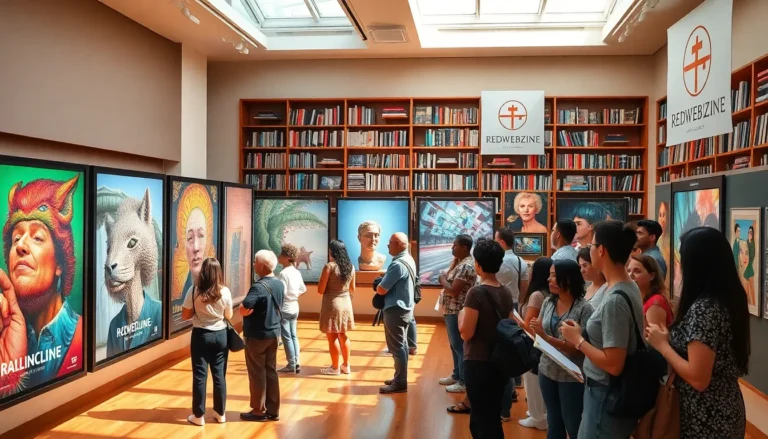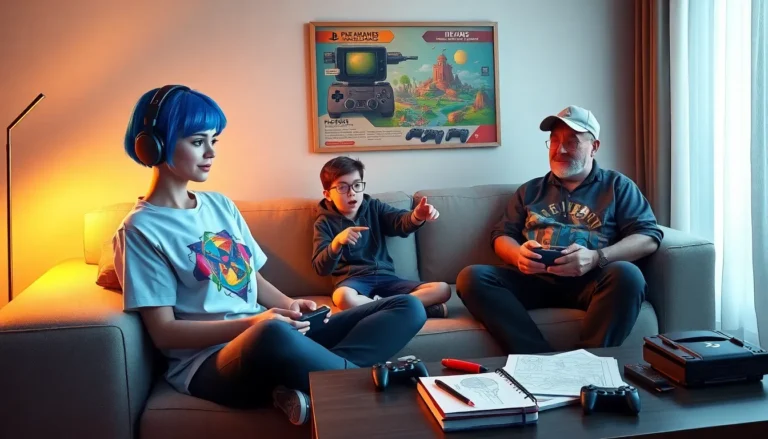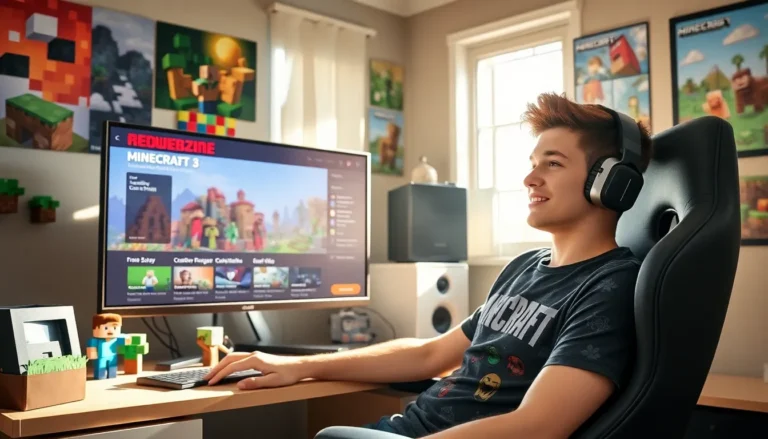Table of Contents
ToggleIn a world where technology and education collide, hiring edtech designers is like finding the perfect avocado at the grocery store: it can make all the difference. These creative geniuses don’t just sprinkle a little design magic; they transform learning experiences into engaging adventures that students actually want to embark on. With their expertise, dull lessons become interactive journeys, making even the most complex subjects feel like a walk in the park—or at least a stroll through a well-designed app.
Imagine a classroom where students are glued to their screens, not because of TikTok but because they’re captivated by the content. That’s the power of skilled edtech designers. They know how to blend functionality with flair, ensuring that educational tools are not just user-friendly but also visually stunning. So, if you want to turn your educational platform into the hottest ticket in town, it’s time to hire the right talent and watch the magic unfold.
Why You Should Hire Edtech Designers
Hiring edtech designers plays a crucial role in the development of effective educational tools. Their expertise brings a necessary blend of functionality and creativity to learning experiences.
The Importance of Design in Education Technology
Effective design significantly contributes to the usability and effectiveness of educational technology. Engaging visuals and intuitive layouts help facilitate better understanding of complex concepts. Users experience less frustration when interacting with well-designed platforms. Research shows that good design can increase user retention by 80 percent. Focusing on user-centric design creates a more inclusive environment that caters to diverse learning styles. Edtech designers possess the skills needed to balance aesthetics and functionality, enhancing the overall learning experience.
Enhancing User Experience in Edtech Products
User experience serves as a core element in the success of edtech products. A streamlined interface simplifies navigation, keeping learners focused on their goals. When users find applications easy to understand, they are more likely to engage deeply with content. Edtech designers employ best practices to ensure accessibility, enabling all students to benefit from these tools. Features such as personalized pathways and interactive elements foster engagement and retention. Incorporating feedback mechanisms allows for continuous improvement, directly addressing user needs and preferences.
Skills to Look for in Edtech Designers



Identifying the right skills in edtech designers ensures the creation of effective educational tools. Focus on both technical and soft skills to find a well-rounded candidate.
Technical Skills Required
Edtech designers need proficiency in design software like Adobe Creative Suite and Figma. Knowledge of coding languages such as HTML, CSS, and JavaScript can enhance collaboration with development teams. Familiarity with learning management systems (LMS) and content management systems (CMS) is crucial for seamless integration. Understanding user experience (UX) principles allows them to create intuitive interfaces. Data analysis skills provide insights to improve design based on user engagement. These technical abilities empower designers to develop functional and visually appealing educational platforms.
Soft Skills that Matter
Creativity drives an edtech designer’s ability to generate innovative solutions for engaging content. Strong communication skills facilitate collaboration with educators and stakeholders. Adaptability helps designers navigate the fast-paced changes in educational technology. Critical thinking enables them to solve complex problems effectively. Empathy allows designers to understand the diverse needs of learners. These soft skills foster a productive environment that enhances the design process and contributes to successful educational outcomes.
Where to Find Edtech Designers
Finding talented edtech designers requires strategic approaches in various channels. Explore the following methods to connect with the right professionals.
Online Platforms for Hiring
Numerous online platforms facilitate the hiring of edtech designers. Websites like Upwork, Freelancer, and Fiverr offer access to a vast pool of freelancers with relevant skills. LinkedIn provides networking opportunities, allowing users to connect directly with potential hires. Companies can also explore specialized job boards such as EdSurge or EdTech Jobs, which focus solely on the education technology sector. These platforms simplify the vetting process by allowing employers to review portfolios and ratings. By leveraging these resources, hiring managers can effectively identify and hire skilled designers suited for their specific educational projects.
Networking in the Edtech Community
Engaging with the edtech community fosters valuable connections with potential designers. Participating in edtech conferences, webinars, and meetups allows individuals to build relationships with industry professionals. Joining online forums and social media groups specific to edtech can also facilitate meaningful networking opportunities. Encouraging referrals from current team members expands the search for quality designers, as they often know talented professionals seeking new opportunities. Active involvement in the community enhances awareness of industry trends and developments, making it easier to find designers who align with the organization’s goals.
The Hiring Process for Edtech Designers
Finding the right edtech designer requires a structured approach to ensure alignment with organizational goals. Effective strategies include crafting a precise job description and implementing thorough evaluation processes.
Crafting the Perfect Job Description
A well-defined job description attracts qualified candidates. Start by clearly outlining responsibilities, such as creating engaging educational tools and enhancing user experience. Specify required technical skills including proficiency in design software and knowledge of coding languages. Highlight soft skills like creativity and communication, which foster collaboration. Including details about company culture enhances the appeal to potential applicants. Additionally, emphasize the importance of user-centered design in creating inclusive learning environments.
Interview Tips and Candidate Evaluation
Preparing for interviews allows evaluators to make informed decisions. Focus on assessing both technical and soft skills through targeted questions. Ask candidates to showcase portfolios that demonstrate their design process and problem-solving abilities. Evaluating communication skills through discussions provides insight into their adaptability and teamwork. Incorporating a practical design exercise can gauge their creativity and understanding of user needs. Collecting feedback from team members on candidate presentations fosters comprehensive evaluations. Establishing clear criteria ensures candidates meet essential qualifications for successful edtech design contributions.







